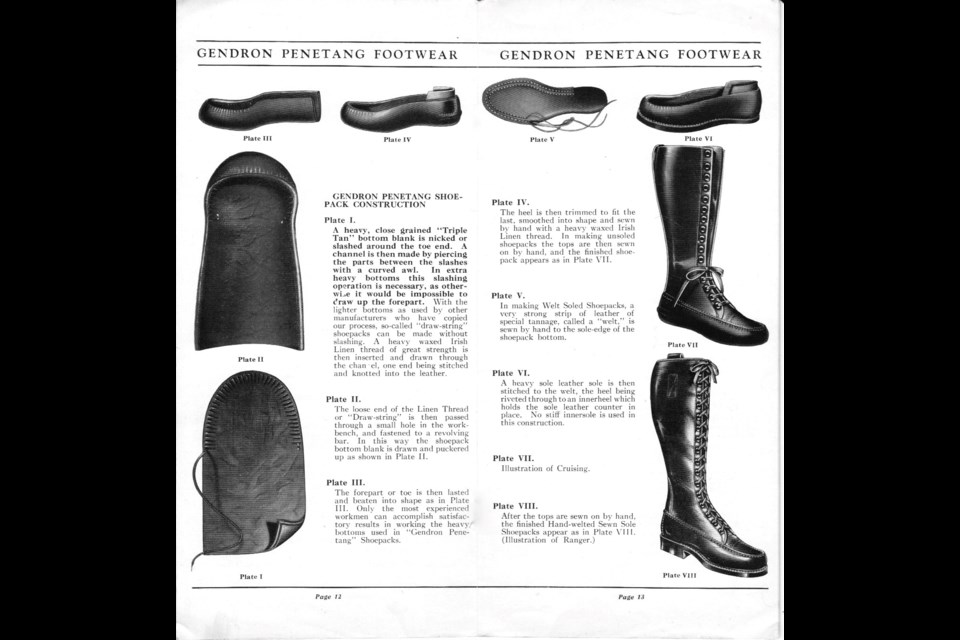Postcard Memories is a weekly series of historic postcard views and photos submitted by René Hackstetter.
The origin of the shoepack, the calf-length waterproof boot, made famous by Gendron and others, is to be found in native footwear of Georgian Bay.
Wet, cold and rough conditions when skidding logs out of the bush meant good footwear was essential. Rooted in the moccasin of the Ojibway, but made up in oil and wax curried leather by Breithaupts of Penetanguishene, the difference, a long shaft for protection from the underbrush.
After logging the hemlock and oak, the by-product was the bark, crushed by mills adjoining the tannery, which produced the tannin for leather. Further treatment yielded a leather resistant to moisture for the specialty leathers required in all aspects of a culture based on the horse.
The heavy, black harness leather for the draught horses pulling the sleds from forest to mill, the brown harness for light carriages and single horses. All made in Penetang. Shoe and boot leather was in constant demand.
Michel Gendron tanned leather, it is reported, but his fame was gained making shoepacks and his process, in the accompanying images of an early catalogue, reveal the method of construction.
Many imitators he claims, but none equal to his products.
As the lumber trade cut everything in site, the town and the area suffered the booms and busts of extractive economies. It wasn’t until years later, after intense soil erosion, that the Simcoe County forests were re-planted. A desultory re-planting of a single type of pine that burdens the landscape to this day.
The leather trades in Penetang, Gendron, two doors south of the old Canada House, had actual shoe- and bootmakers hand stitching the work, on benches that haven’t changed for centuries.
I leave you with the accompanying descriptive and humorous poem from ‘The Poetical Directory of Penetanguishene,’ in which these craftsmen are described.
Rene Hackstetter, October 28, 2020.



.jpeg;w=120;h=80;mode=crop)